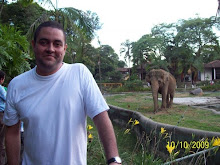
___________
http://open-site.org/img/chirone/amernord-map.jpg
USA
At 3.79 million square miles (9.83 million km2) and with over 309 million people, the United States is the 3rd or 4th largest country by total area, and the third largest both by land area and population. It is one of the world`s most ethnically diverse and multicultural nations, the product of large-scale immigration from many countries. The U.S. economy is the world`s largest national economy, with an estimated 2009 GDP of $14.3 trillion (a quarter of nominal global GDP and a fifth of global GDP at purchasing power parity).
In the 19th century, the United States acquired land from France, Spain, the United Kingdom, Mexico, and Russia, and annexed the Republic of Texas and the Republic of Hawaii. Disputes between the agrarian South and industrial North over states` rights and the expansion of the institution of slavery provoked the American Civil War of the 1860s. The North´s victory prevented a permanent split of the country and led to the end of legal slavery in the United States.
By the 1870s, the national economy was the world´s largest. The Spanish–American War and World War I confirmed the country´s status as a military power. It emerged from World War II as the first country with nuclear weapons and a permanent member of the United Nations Security Council. The end of the Cold War and the dissolution of the Soviet Union left the United States as the sole superpower. The country accounts for two-fifths of global military spending and is a leading economic, political, and cultural force in the world.
___________
https://www.cia.gov/library/publications/the-world-factbook/geos/us.html
CANADA
It is the world´s second largest country by total area. Canada´s common border with the United States to the south and northwest is the longest in the world.
A federation consisting of ten provinces and three territories, Canada is governed as a parliamentary democracy and a constitutional monarchy with Queen Elizabeth II as its head of state. It is a bilingual nation with both English and French as official languages at the federal level. One of the world´s highly developed countries, Canada has a diversified economy that is reliant upon its abundant natural resources and upon trade; particularly with the United States, with which Canada has had a long and complex relationship. It is a member of the G-8, G-20, NATO, OECD, WTO, Commonwealth, Francophonie, OAS, APEC, and UN.
Canadian culture has been greatly influenced by immigration from all over the world. Many Canadians value multiculturalism and see Canada as being inherently multicultural. However, the country´s culture has been heavily influenced by American culture because of its proximity and the high rate of migration between the two countries. The great majority of English-speaking immigrants to Canada between 1755 and 1815 were Americans from the Thirteen Colonies; during and immediately after the War of Independence, 46,000 Americans loyal to the British crown came to Canada. Between 1785 and 1812, more Americans emigrated to Canada in response to promises of land.
___________
https://www.cia.gov/library/publications/the-world-factbook/geos/ca.html
COMPARISON USA vs. CANADIAN CULTURE
AMERICANS
Self-centered
Aggressive
Arrogant
Jump to conclusions
Nationalistic
Don’t respect cultural differences
Distrustful
Superiority complex
CANADIANS
World awareness
Low key
Modest
Methodical approach
Moderate, even apathetic
Multicultural
Trusting
Some inferiority complex
___________
Class presentation North America, http://interactiva.eafit.edu.co/ei/
This chart says it all, Canadians are much more pleasent persons to be around with than americans.
Plus the country is safer, cleaner, quieter and more beutiful.
Could I say more ?.
QUESTION
"The HP Way"*
The proposed case study for this module illustrates the importance of organisational culture in the context of the USA It also enables the reader to understand the strong relationship between national and organisational culture.
Based on the class presentations and the assigned case study, please answer the following questions:
1. List and explain 3 strategies used by HP in order to develop and sustain a strong organisational culture - "The HP Way".
- Open door: This policy allows employees to contact their managers and provide excellent feed back about the companies movements.
- Close relations: By adressing friendly to every employee the company has improve productivity, because it gives employees many advantages when working at HP.
- Telling Stories: By telling their employees about the organisation features and aspects, HP motivates them to work better and harder.
2. By 2001, Carly Fiorina was facing a huge dillemma in terms of organisational culture. "Should Fiorina try to revitalize the HP way or attempt to replace it with a “better” culture than the one established by Dave Packard and Bill Hewlett in the 1940’s ?". Explain your answer.
Not replacing the organisational culture, but Carly should revitalise the HP way especially on the company practices, for better and more efficient ones.
"Time had stood still for the people of HP; they did not know how to move forward without their founders. They were afraid of change; what if changing anything meant destroying everything". One of Fiorina´s big themes is that in the end business isn’t just about numbers; it’s about people.
___________
1. http://www.carlyfiorina.com/about.html
2. *Forster, Nick. 2002. “Managing excellence through corporate culture: the HP way” The Management Case Study Journal 2(1): 13-25.












